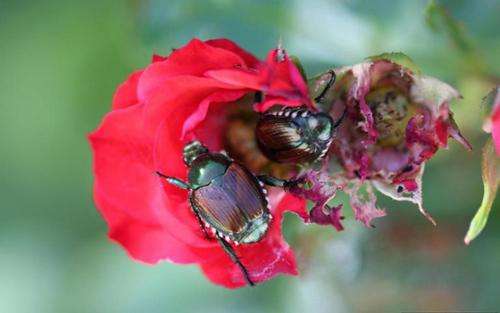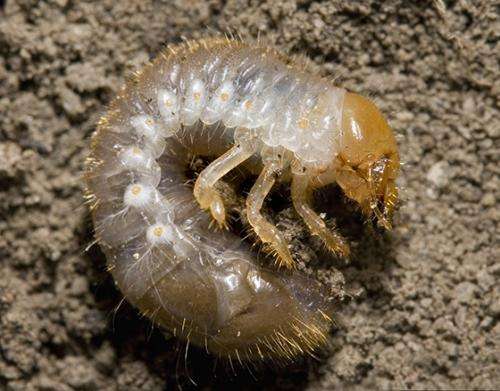New guide available on Japanese beetles in Montana

A guide to help Montanans detect, monitor and control Japanese beetles is now available from Montana State University Extension.
Prior to 2013, the Japanese beetle was established in a small area of Billings, but had not spread. In 2013, it was introduced into seven municipalities through shipments of infested nursery stock, said insect diagnostician Laurie Kerzicnik.
The larvae are pests of turf grass. Lawns with yellow patches might indicate an infestation. The adults feed on more than 300 plants, but they prefer roses, apple, grape, cherry, raspberry and linden. They also eat field crops, vegetables and ornamental bushes.
Japanese beetle larvae, also known as grubs, are about one inch long when they mature. They are off-white, have a C-shaped body and three pairs of legs.
Japanese beetle adults can be half an inch long. They have a metallic green, oval body with bronzed outer wings. They have five small tufts of white hair along the sides of their abdomen and two more patches protruding from the last segment of their abdomen.

A variety of approaches are available to control Japanese beetles, Kerzicnik said. Montanans can use insecticides or plant resistant species, such as lilacs, spruce and the common chokecherry. They can use biological controls, which include parasites, nematodes, fungi or other organisms.
More information: store.msuextension.org/Product … tle__MT201404AG.aspx
Provided by Montana State University



















